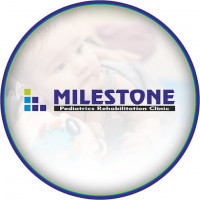Neurodevelopment Therapies Uncovered: 15 Proven Techniques to Empower Your Child

Neurodevelopment therapies are transforming the way we support children with developmental delays and neurological challenges. These therapies are specially designed to help kids overcome obstacles in movement, communication, behavior, and learning. From early intervention to targeted treatment plans, each approach is tailored to meet a child’s unique needs.
Whether your child struggles with speech delays, motor coordination, or sensory sensitivity, neurodevelopment therapies provide structured, evidence-based solutions. The goal is simple—empower children to reach their fullest potential in daily life, school, and relationships.
In cities like Jaipur, access to specialized care is growing. A trusted pediatric physiotherapy clinic in Jaipur can play a pivotal role in helping children improve mobility, posture, and overall physical function through guided therapy sessions.
With a team of trained professionals and child-friendly environments, these clinics offer hope and tangible progress—ensuring that every child receives the support they need at the right time.
Why Early Intervention Matters
One of the golden rules in neurodevelopmental support is: the earlier, the better. Early intervention taps into critical windows of brain development, maximizing the effectiveness of therapy. Here’s why it matters:
Brain plasticity is highest during early years
Delays can compound if left untreated
Skills like communication, movement, and social behavior evolve faster when supported early
Early assessments followed by targeted therapies can dramatically alter a child’s trajectory—boosting confidence, independence, and social participation.
Occupational Therapy (OT)
Occupational therapy helps children perform daily activities with greater ease. OT focuses on fine motor skills, sensory integration, and self-care routines.
Key Benefits:
Improved hand-eye coordination
Enhanced focus and task management
Better handwriting and school readiness
OTs often use play-based approaches, adaptive tools, and routine training to make kids more functional in home and school environments.
Speech and Language Therapy
Speech-language pathologists (SLPs) address communication challenges, from speech articulation to language processing and social communication.
Who Benefits:
Children with delayed speech
Kids on the autism spectrum
Children with apraxia or stuttering
Techniques Used:
Picture exchange systems
Oral-motor exercises
Augmentative communication devices
Physical Therapy
Physical therapy enhances gross motor skills, posture, coordination, and balance. It’s especially useful for children with cerebral palsy, muscle weakness, or injuries.
PT Focus Areas:
Strengthening core and limb muscles
Improving gait and mobility
Preventing secondary complications
Therapists often use fun obstacle courses, stretching routines, and games to keep kids engaged.
Applied Behavior Analysis (ABA)
ABA is a widely recognized, evidence-based approach for children with Autism Spectrum Disorder. It reinforces positive behaviors and minimizes unwanted ones.
ABA Strategies:
Discrete Trial Training (DTT)
Positive reinforcement
Functional Behavior Assessment (FBA)
ABA can be intensive but often yields measurable improvements in communication, social interaction, and independence.
Sensory Integration Therapy
This therapy helps children who are either overly sensitive or under-sensitive to sensory input. Think loud noises, bright lights, or touch sensitivity.
Goals:
Regulate sensory input
Improve attention span
Reduce behavioral outbursts
Techniques:
Brushing therapy
Swing therapy
Tactile games and textures
Cognitive Behavioral Therapy (CBT)
CBT is helpful for children with anxiety, ADHD, or mood disorders. It focuses on the link between thoughts, feelings, and behaviors.
Key Tools:
Identifying negative thoughts
Developing coping skills
Practicing emotional regulation
CBT builds resilience, problem-solving, and emotional awareness.
Play Therapy
Play is a child’s language—and play therapy uses that language to address trauma, anxiety, and emotional struggles.
Approach:
Role play
Dollhouses
Art and storytelling
Therapists observe behavior during play to gain insights and help children express emotions nonverbally.
Social Skills Training
Social interaction is often challenging for neurodivergent children. These structured sessions teach:
Eye contact
Turn-taking
Empathy and perspective-taking
Role-plays, group activities, and games help build confidence and social awareness.
Auditory Integration Training
This therapy targets sound sensitivity or auditory processing disorders. Children listen to specially modulated music to improve sound tolerance and attention.
Outcomes may include:
Reduced hyperactivity
Better classroom focus
Improved language processing
Vision Therapy
This isn’t about eyesight—it’s about how the brain processes visual input. For children with tracking or convergence issues, it can be transformative.
Includes:
Eye exercises
Visual puzzles
Tracking tools
Neurofeedback Therapy
Neurofeedback helps children regulate brain activity using real-time EEG data. It’s non-invasive and used for ADHD, anxiety, and seizures.
Process:
Child watches a screen or plays a game
Brainwaves are monitored
Feedback trains brain to self-regulate
Music Therapy
Music stimulates multiple areas of the brain at once. Certified therapists use rhythm, melody, and instruments to develop:
Communication
Movement
Emotional expression
It’s especially effective for nonverbal children and those with autism.
Animal-Assisted Therapy
Interacting with animals can lower anxiety, increase motivation, and improve communication skills.
Benefits:
Builds trust
Reduces isolation
Enhances emotional expression
Therapy dogs, horses (hippotherapy), and even guinea pigs are used in sessions.
Developmental Therapy
A holistic approach that supports cognitive, emotional, and physical growth. Therapists work on age-appropriate milestones and school readiness.
Focus areas include:
Adaptive behavior
Language development
Emotional skills
Parent Training & Family Support
No therapy works in isolation. Empowering families ensures consistency and reinforces learning at home.
Support May Include:
Workshops
Home programs
Sibling counseling
FAQs about Neurodevelopment Therapies
Q1: At what age should therapy start?
A: The earlier, the better. Many therapies can start as early as infancy if developmental delays are noticed.
Q2: Can children outgrow developmental delays?
A: Some delays may resolve with support, but ongoing therapy is often necessary for sustained progress.
Q3: Are these therapies covered by insurance?
A: Coverage varies. Check with your provider—many cover OT, PT, speech, and ABA under early intervention.
Q4: How long do therapies last?
A: It depends on the child’s condition. Some need short-term support; others benefit from years of consistent therapy.
Q5: How do I know which therapy my child needs?
A: A developmental pediatrician or psychologist can assess your child and recommend a tailored therapy plan.
Q6: Can therapies be done at home?
A: Some programs include home exercises. However, supervision by certified therapists is crucial for best results.
Conclusion
Neurodevelopment therapies are game-changers for children facing developmental challenges. With the right combination of early intervention, expert guidance, and family involvement, children can make remarkable strides in communication, learning, socialization, and independence.
Don’t wait for a diagnosis to start exploring support—empower your child’s journey today.
Note: IndiBlogHub features both user-submitted and editorial content. We do not verify third-party contributions. Read our Disclaimer and Privacy Policyfor details.



